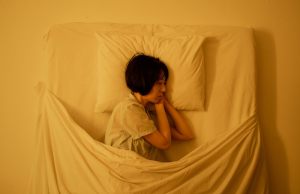
- Depressive disorders are closely related mental health conditions that cause depressive symptoms. There are multiple contributing factors or circumstances that lead to the development of depression, as opposed to a singular cause.
- Some of the most common types of depression include major depressive disorder, substance/medication-induced depressive disorder, peripartum depression, and more.
- Though once classified alongside mood disorders, depressive disorders are a distinct category of mental health conditions—and the DSM-5’s criteria are consistently revised to keep in stride with contemporary research and clinical findings.
- Depressive disorders are complex mental health conditions, with a chemical, genetic, early childhood, and psychological basis.
- Professional care aims to pinpoint these factors, identifying the leading contributors to a client’s depressive symptoms, which can then be treated.
Known more commonly and collectively as depression, depressive disorders are a set of closely related mental health conditions that affect a person’s mood, energy, nervous system, sleep cycles, biochemistry, and even brain waves. There’s little in an individual’s daily life that depressive disorders won’t affect—but other than a shared capacity for being destructive and disruptive, each depressive disorder is quite different. That’s why providers work with their clients to treat and mitigate the symptoms of depression using personalized treatment plans.
From major to manic, depressive disorders are unique mental health conditions with specific symptoms and individual circumstances.

What Are Depressive Disorders?
Depressive disorders, known more commonly as depression, are (as mentioned above) interrelated mental health conditions that cause depressive symptoms and episodes. Though the general concept of depression and its symptoms is well-established culturally, misconceptions and a lack of differentiation between the different types of depressive disorders are just as widespread.
There isn’t one single, exact cause of depressive disorders; previous research leaned toward a serotonin deficiency-related origin, but modern consensus views depressive disorders as conditions with multiple contributing factors.
As such, mental health professionals in clinical and research settings acknowledge depressive disorders may have a hereditary, dietary, neurological, social, and even weather-pattern-related basis. Depressive disorders can cause:
- Loss of interest in daily activities, including sex, hobbies, career goals, and family life
- Low energy and chronic fatigue
- Insomnia or hypersomnia
- Irritability
- Difficulty concentrating
- Sadness, unexplained grief, or anxiety
- Self-harming behavior or in severe cases, suicidal thoughts
Symptoms may worsen or improve, depending on the individual’s environment and personality. Depressive disorders have been linked to many brain-related conditions, including dementia, stroke, brain tumors, and multiple sclerosis. Long-term depressive symptoms are also associated with high blood pressure, accelerated cellular aging, heart disease, increased financial instability, and the risk of homelessness.
What Are the DSM-5 Depressive Disorders?
The DSM-5 has undergone multiple revisions, one of which was to separate depressive disorders from other mood disorders into their own distinct category. As a result, the list of depressive disorders that are within the DSM-5 are:
- Substance/medication-induced depressive disorder: This mental health condition is caused by regular use or misuse of illicit substances, over-the-counter medications, or even prescription medication. This can either occur because of misuse, or simply because of the side effects of common prescriptions such as SSRIs (selective serotonin reuptake inhibitors). Symptoms caused by regular usage or misuse must be present, in most cases, for 1 month.
- Major depressive disorder (MDD): Major depression causes emotional detachment, fatigue, difficulty concentrating, sadness, hopelessness, and apathy. Those with major depressive symptoms are at increased risk of developing chronic physical health conditions. Major depressive symptoms must be present for more than 2 weeks in order for an individual to be accurately diagnosed by a provider.
- Premenstrual dysphoric disorder (PMDD): Similar to premenstrual syndrome (PMS), but far more severe, premenstrual dysphoric disorder’s symptoms kick in shortly after ovulation (typically the first week or two before a woman’s period begins) and ends once menstruation starts up again. This depressive disorder may cause intense irritability, fatigue, apathy, and food cravings, among other symptoms.
- Peripartum depression (PND)—formerly postpartum depression (PPD): Peripartum depression affects women who’ve given birth or who are pregnant. This disorder can onset immediately or months after childbirth and is associated with chemical imbalances which may take some time to reset post-childbirth. Childbirth-related changes in appearance and energy levels may affect self-esteem and confidence, too.
- Persistent depressive disorder (PDD) (formerly known as dysthymia): Persistent depressive disorder is also commonly referred to as high-functioning depression. This depressive disorder presents common depressive symptoms (low energy, poor mood, lack of motivation), but must continue for 2 years or more in order for a provider to make a professional diagnosis. PDD may go on for more than 2 years before being diagnosed, simply because people may learn to cope with their condition partially, but often without being able to cease the cycle of depressive episodes that they’re caught in.
- Other specified depressive disorder: This category within the DSM-5 refers to individuals who meet the diagnostic qualifications for a depressive disorder, but do not meet the full criteria for any singular type of depression.
- Unspecified depressive disorder: This form of depression is used in clinical situations where a client does not meet the criteria for any specific depressive disorder and in which it is difficult to complete a diagnosis because of a lack of information.
The DSM-5’s content is the clinical standard by which providers, regardless of licensure, typically treat and diagnose mental health conditions. It is an invaluable tool for providers that is revised on a regular basis. That’s because mental health research constantly rolls the ball forward—a new study or finding may reveal a new bit of insight or comprehension into the differences between once-related conditions, or explain the causality behind a complex disorder such as a type of depression.
Though at one point unspecified depressive disorder was removed from the DSM-5, the latest edition made sure to include it—this was done in order to prevent unnecessary overlap between mood disorders and depressive disorders.
Are Depressive Disorders a Type of Mood Disorder?
No—however, bipolar depressive disorder (or manic depression) is a mood disorder that can cause depressive symptoms: Sufferers experience a pendulum swing from the euphoric happiness and productivity of a positive manic state to the distressing and numbing darkness of a depressive manic episode. In the past, within the DSM-5, depressive disorders were cataloged with other mood disorders. But with further research and revisionary adjustments to the manual, the DSM-5 no longer lists depressive disorders alongside mood disorders.
What Are 6 Types of Depressive Disorders?
Six of the commonly diagnosed depressive disorders include:
- Major depressive disorder (including major depressive episodes)
- Persistent depressive disorder (formerly known as dysthymia)
- Premenstrual dysphoric disorder
- Disruptive mood dysregulation disorder
- Substance/medication-induced depressive disorder
- Depressive disorder due to another medical condition
These depressive disorders are all characterized by unique symptoms—and a mental health professional can identify the specific warning signs of each depressive disorder. Being diagnosed with a form of depression is a thorough process, one that involves a mental health professional’s evaluation, a questionnaire, and (if needed) testimony and observations from those closest to the client, including friends, family, and romantic partners.
What’s the Most Severe Type of Depressive Disorder?
Because of the way that major depressive disorder with psychotic features combines the effects of psychosis with the already burdensome and potentially dissociative effects of depression, it is considered the most severe type of depression. However, it’s not the most widespread; WHO estimates that by the year 2030, major depressive disorder will be the world’s most prevalent disease. Ranges for the lifetime prevalence (one’s chances of ever developing a specific condition) of major depression in adults are between 5-17%, averaging at around 12%.
Are Depressive Disorders a Mental Illness?
Depressive disorders are a mental illness—but they’re not an incurable mental illness. Depressive disorders are entirely treatable with a professional’s help. Mental health researchers have pinpointed distinct factors that play into someone developing depression. As a result, providers know that:
Depressive disorders have a chemical basis:
Research shows that depressed patients commonly suffer from low plasma and GABA levels. Found in alcohol, GABA is thought to offer an antidepressant effect by inhibiting monoamine pathway function in the mesocortical and mesolimbic systems. Some people may use alcohol as a way to temporarily relieve the symptoms of depression.
Depressive disorders have a genetic link:
In-depth family studies have indicated that hereditary traits may also play a role in the susceptibility to depression. Heritability could be as high as 40-50% in some cases, meaning that if an individual has a parent who struggles with a type of depression, they’re at increased risk for developing depressive symptoms at some point in their life. Thyroid and growth hormonal issues have also been linked to depressive symptoms.
Depressive disorders are connected to adverse childhood experiences:
Adverse childhood experiences can result in drastic alterations to a person’s neuroendocrine and behavioral responses to stress and anxiety. Over time, this may cause structural changes in the cerebral cortex, which may play a role in the development of depression later in life. The brain is the body’s most complex organ, and psychiatric providers and researchers alike are constantly looking for the best ways to treat depressive disorders and other mental health conditions that affect mood.
Depressive disorders have a psychological basis:
In cognitive theory-based psychology, depression occurs as a result of cognitive distortions, which are unbalanced and unrealistic thoughts that become intrusive to everyday life. Cognitive distortions can be difficult to recognize from within the experience, meaning that providers work with clients closely in order to help them map out and mitigate their cognitive distortions over time.
Providers work to identify and address the leading causes of depression in their clients. From there, both parties join together to find therapeutic or psychiatric treatment options that best suit the client’s lifestyle, personality, and the severity of their depression. The ultimate goal of the client-provider relationship is to establish a bond that’s empathetic, goal-oriented, and professional.
With time, and with the right provider, remission of depressive symptoms is possible, with studies indicating that around 20-40% of people will enjoy full remission.













